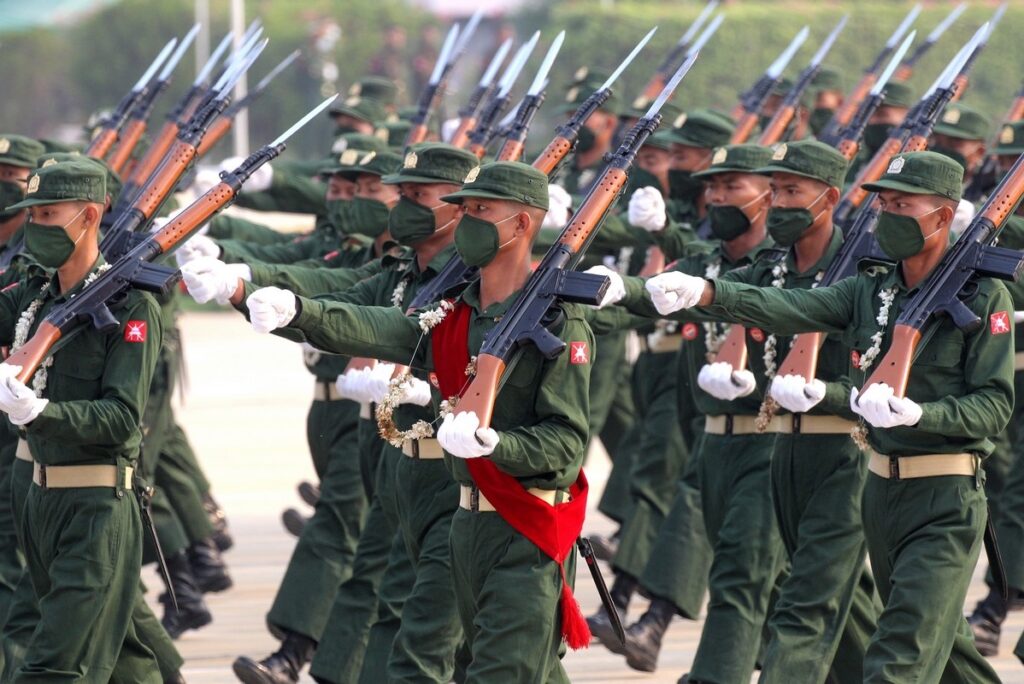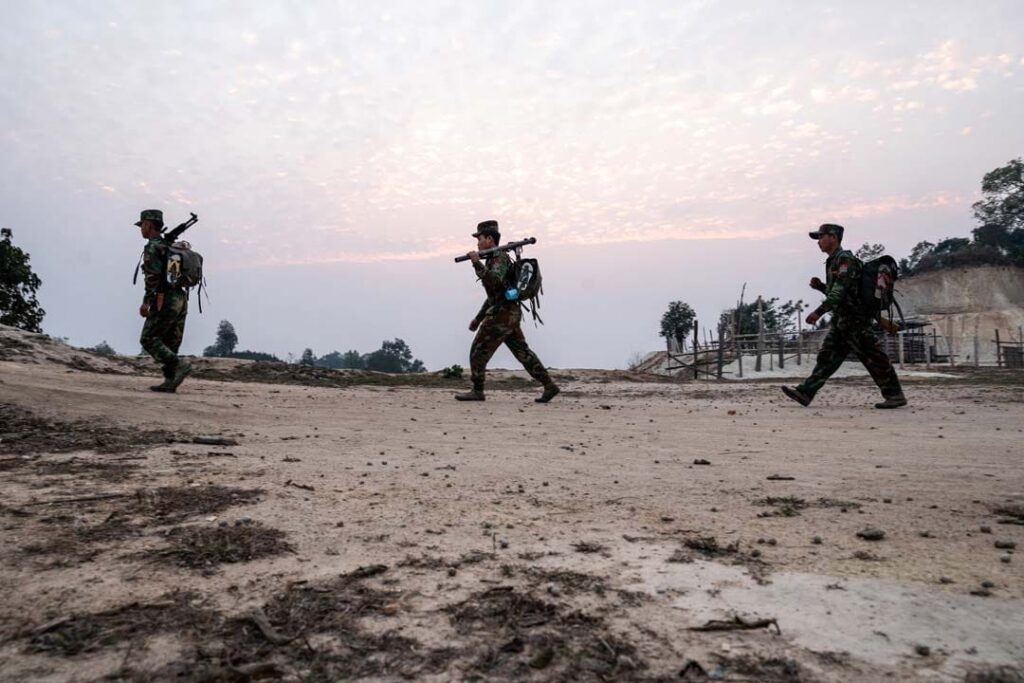Approximately two-and-a-half years after seizing power in the February 2021 coup, the Tatmadaw aka as Myanmar’s military, is now swiftly losing control of the country’s border towns. An alliance of three ethnic armies, namely the Myanmar National Democratic Alliance Army (MNDAA) aka ‘Kokang army’; the Ta’ang National Liberation Army (TNLA); the Arakan Army (AA), is mounting the biggest threat the Tatmadaw has faced in years.
WHAT HAPPENED?
These different groups of well-armed rebels began their offensive on 27 October in Shan state. Dubbed as ‘Operation 1027’, this resistance offensive has made huge progress. With an aim to overthrow the military and restore democracy, the rebels have successfully gained nearly complete control over more than 150 outposts in the northern region of Myanmar and occupied areas along the Sino-Myanmar border. These include various vital towns, two border crossings with China as well as critical trade routes. An example can be the border town of Chinshwehaw, a crucial channel wherein annual trade between Beijing and Naypyidaw accounts to over 1.8 billion dollars.
It is important to note that the MNDAA and the TNLA are a part of a coalition of a seven-armed ethnic organization that maintain close ties with the Chinese and have established bases or territories near China’s borders.

The rebels have conducted a set of four offensives as of 21 November. Through these fierce and coordinated operations against the military, they have managed to seize more than 8,000 square km. After the first offensive on 27 October, the second one ‘Operation 1107’, was launched on 07 November to liberate the south-eastern Kayah state. The resistance was able to the capture around two military bases in Kayah.
The third offensive occurred on 13 November, the AA carried out attacks on border guard outposts in the western Rakhine state. Military posts in the Rathedaung and Minbya areas were taken control of by the ethnic armed group. On the same day, fighting erupted in the Chin state and the Chin resistance began seizing territories.
The conflict in Rakhine was especially significant considering that AA was in a ceasefire agreement with the Tatmadaw.
CONSEQUENCES
The rapid territorial gains made by the alliance have not only encouraged resistance forces around the country but have also managed to overwhelm the military. It appears as if the anti-coup movement has been rejuvenated with fighters across Myanmar, including the central state of Sagaing.
On the downside, the operation has also contributed immensely towards displacing tens of thousands of innocents across many states. Around 5,000 people entered India through Mizoram state when the fighting broke out in Chin State. As per the United Nations, approximately 1.7 million people have been displaced from their homes due to the violence. A Myanmar advocacy group, the Assistance Association for Political Prisoners, which had been monitoring the growing crisis in the country, has reported that at least 4,182 civilians and pro-democracy activists have lost their lives by the hands of the military in the conflict.
Around a thousand foreign nationals were also reported to have been trapped in parts of the northern Shan state. These include citizens of Thailand, Singapore, and the Philippines. Over 260 of these foreign nationals have been evacuated with the help from Myanmar authorities from Laukkai region of northern Shan however, many still remain trapped.

THE MILITARY’S RESPONSE
While acknowledging the challenge presented by the resistance alliance, the military-installed-President Myint Swe has warned that the country would ‘split into various parts if the government does not effectively manage the incidents happening in the border region.” This period has been described as a critical phase for the Myanmar Junta as approximately 447 of their personnel have given up their weapons and surrendered in many states. Such as northern Shan, Kayah, Chin, Rakhine, Mon, as well as the regions of Sagaing and Magwe.
As the ethnic rebellion continues, defence experts and analysts suggests that the military may withdraw its forces to the capital and try their hand in establishing control over more significant regions, like Yangon (the financial capital).
The turning point and a defining moment into the crisis is expected to commence when the ethnic alliance takes aim of the heartland i.e. north of Mandalay. However, what is certain is the fact that the Southeast Asian community will continue to intently keep track of the rising internal conflict in the country and make attempts to intervene if possible.
Stay connect with Sitata and download our app if you’re travelling in/to Australia to get instant updates of your surroundings to avoid any travel mishaps. Our travel insurance can assist you proactively in case of any travel emergencies.



